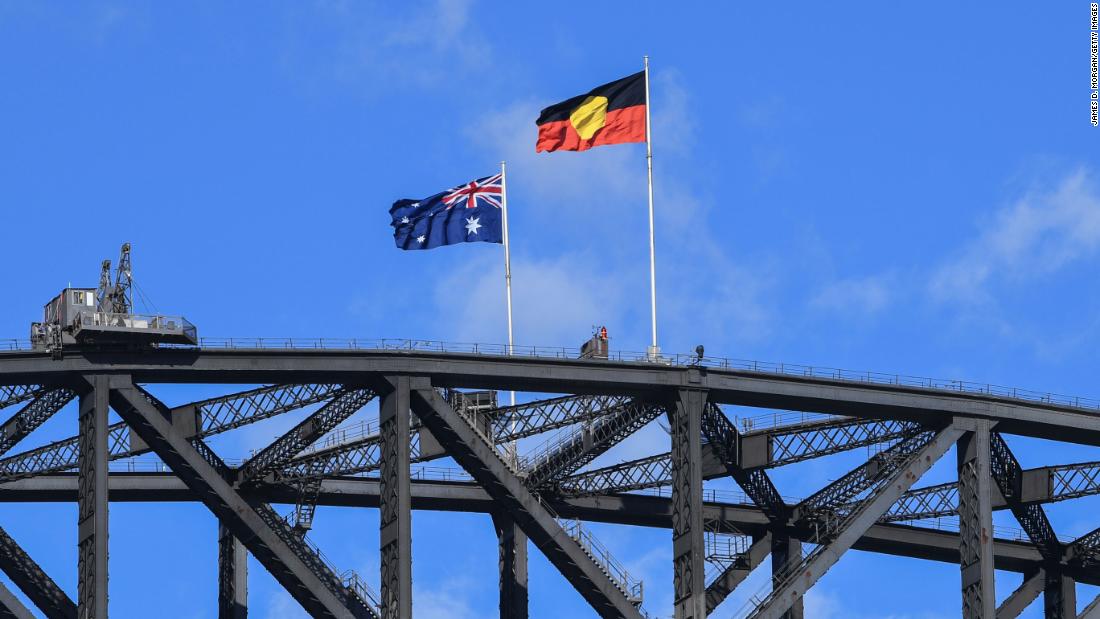In a deal worth more than 20 million Australian dollars ($14 million), Prime Minister Scott Morrison’s government secured the rights from Indigenous artist Harold Thomas, who created the flag over 50 years ago.
The agreement means the flag can now be reproduced on clothing, merchandise, sports jerseys or artworks — without permission and free of charge. In a statement, Morrison said the flag had been “freed,” adding that his administration had “sought to protect the integrity of the Aboriginal Flag, in line with Harold Thomas’ wishes.”
The red, black and yellow design has been recognized as an official flag of Australia since 1995. But it became the subject of a commercial dispute when a company that licensed the image from Thomas began demanding payment from various organizations using it, including a health charity, several clothing brands and Australia’s National Rugby League.
A 2020 parliamentary inquiry, which supported government efforts to acquire the rights from the artist, described the licensee’s actions as “heavy-handed” but “entirely legal.”

A man holds the Aboriginal flag at a rally in Sydney, Australia. Credit: James D. Morgan/Getty Images
In a statement, minister for Indigenous Australians, Ken Wyatt, described the flag as an “enduring symbol close to the heart of Aboriginal people,” adding: “Now that the Commonwealth holds the copyright, it belongs to everyone, and no one can take it away.”

Harold Thomas, designer of the Aboriginal flag, pictured in 1994. Credit: Craig Golding/The Sydney Morning Herald/Fairfax Media/Getty Images
“When I created the flag, I created it as a symbol of unity and pride,” he wrote. “That pride we have for our identity that harks back to the birthing of our dreaming, to the present existence and beyond. And we humble ourselves and give homage to all that has been created and left for us.
“The flag was never intended to be a political platform. In the future, the flag will remain, not as a symbol of struggle, but as a symbol of pride and unity.”
Ongoing questions

The Aboriginal flag projected onto Sydney Opera House on Australia Day in 2021. Credit: James D. Morgan/Getty Images
Morrison’s office said in a news release that Thomas will retain “his moral rights” over the design. And while the flag has been freed for personal use, the textile printing firm Carroll & Richardson Flagworld will “remain the exclusive licensed manufacturer and provider of Aboriginal Flags and bunting.” Royalties from those sales will go towards the National Aborigines and Islanders Day Observance Committee (NAIDOC), with the government also announcing a new 100,000 Australian dollar ($71,000) scholarship in Thomas’ honor.
In an email to CNN, the National Indigenous Australians Agency confirmed the multi-million-dollar figure includes both the fee paid to Thomas and “payments to the licensees for termination of their licenses.”

